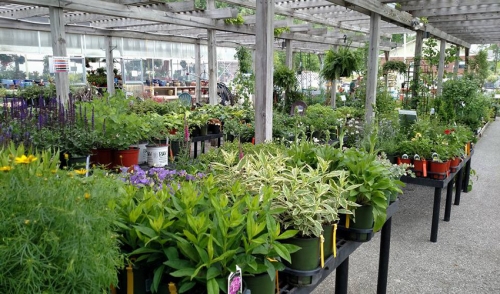{article.name}
Forget March, It’s April!

- Share this:
- Share on Facebook
- Pin on Pinterest
- Tweet on Twitter
April is here! Hooray! Longer days start and we see the lovely faces of daffodils, tulips, and hyacinths. It is time to improve the soil, think pansies and other early cool weather annuals. Fruit trees and berry bushes arrive. These can all be planted when the temperature are cold. Now we are talking!
So how do we go about choosing a fruit tree? First know your zone. Decide if you want a regular size tree, or semi–dwarf. Some trees are self-pollinating (meaning they do not need another tree to help produce fruit). Others may need a partner, to complete pollination. Talk to your garden center professional.
Pick an area in your yard that has enough room to support your tree or orchard because they take up a considerable amount of space. Regular apples trees can grow 30 to 40 feet while semi -dwarf grow about half that. You can also choose dwarf trees that grow 5 to 10 feet tall. Then watch the area where you would like to plant fruit trees or bushes. Test the soil, ideal Ph is 6.0 – 7.0. Six hours or more of sunlight is needed to produce fruits with good color and flavor.
Now you are ready to dig your hole. Make sure to dig it 3 times the size of the root ball/pot. Also if you are improving the soil with compost or manure you will need to go deeper and larger. If the tree is in a pot just simply remove it. If however the tree is in burlap, carefully cut any rope that is tied around the outer covering and remove the root ball (being careful not to break apart the roots). Then place in your hole. Make sure the tree or bush sits at the same level in the hole as it was in the pot. Back fill with good soil and water in well. A deep soaking with a gallon of water should suffice. Mulching helps maintain moisture.
Rain water is not enough to keep a new tree going. You must water new trees and shrubs at least once a week until well established. Put the hose on a trickle and water for an hour or so. Come see us for addition information and supplies!
Blueberries, Raspberries Etc.
April is the ideal time to plant berry bushes. For Blueberries, pick a sunny location, with a Ph of 4.0 to 5.0. Space plants about 5 feet apart. Raised beds are a great way to contain your patch. Using raised beds also means that you can amend soils that do not meet the requirements and keep weeds at bay.
Dig the holes 20 by 18 inches wide. Make sure the top of the root ball is even with the ground level. Back fill with good soil and mulch. Water one to two inches per week. Fertilize one month after planting.
You may want to use netting over fruit that is ripening so birds don’t get to your berries first.
It is not necessary to prune Blueberries for the first four years. When pruning is required it must be done in late winter just before new growth begins.
Blackberries and Raspberries require soil that is a Ph of 5.6 to 6.2. These plants also need some type of support. This makes growing and harvesting easier for you, the grower. The usual method is to make wooden “T” shaped supports on each end of the row. Then string wire across each “T.” It should look like telephone poles with wires. Six hours of sunlight will give the best results. Space blackberries 5 feet apart with 10 feet between rows. Raspberries can be 3 feet apart and 8 feet between rows. Dig a hole that is 2 times larger than the pot and deep enough to have the bush sitting level with the surrounding ground. Back fill and water in well. Fertilize plants 4 to 6 weeks after planting with a time-release fertilizer. You will not need to prune the first year as plants are establishing themselves. During the second year, prune the fruit–bearing canes right after harvest. Following years the canes can be pruned in late winter before growth starts.
Bare root plants usually need a year to establish and be harvested. Our berries are grown in pots which means you can be enjoying berries this early fall.



Comments